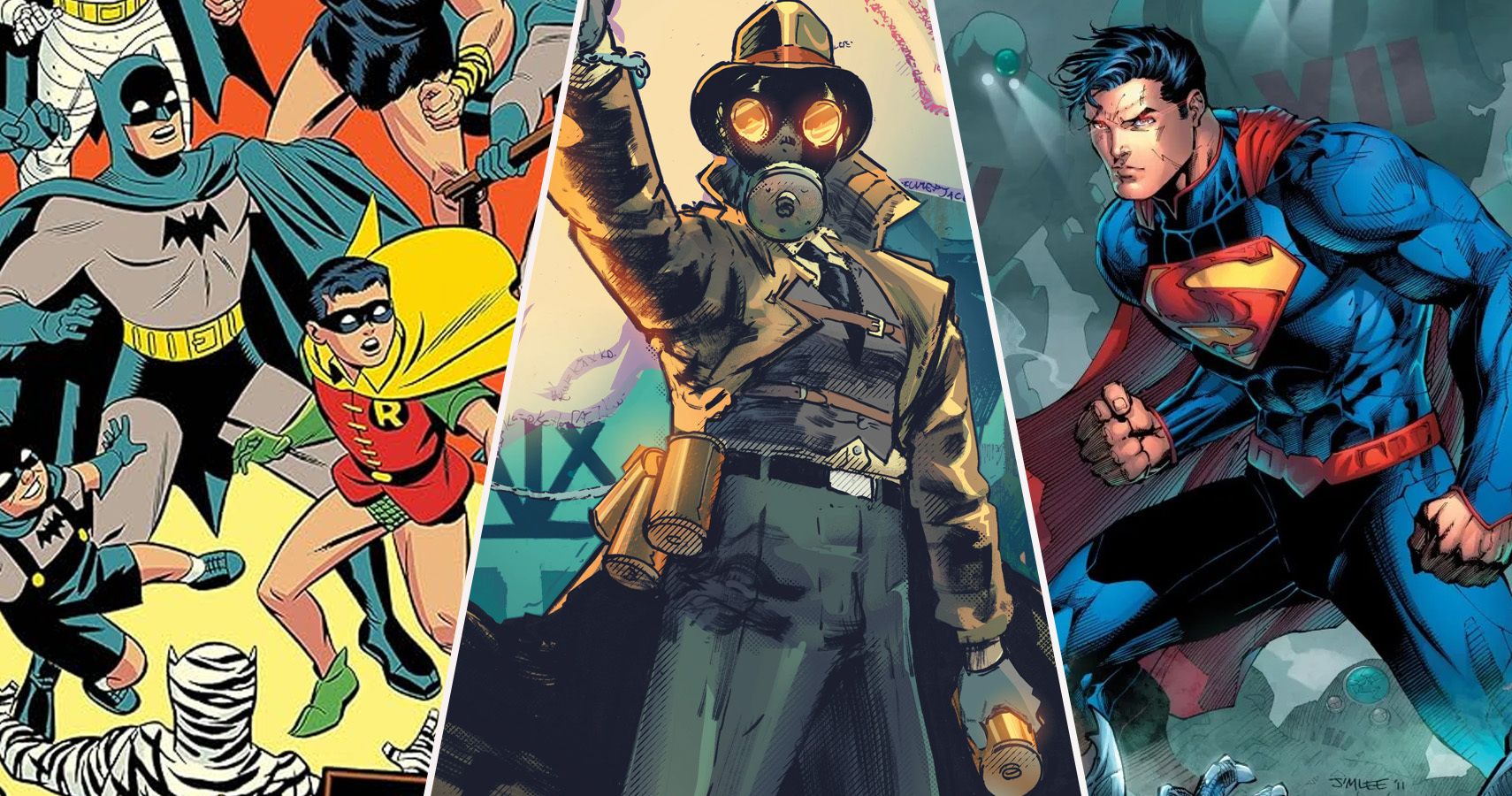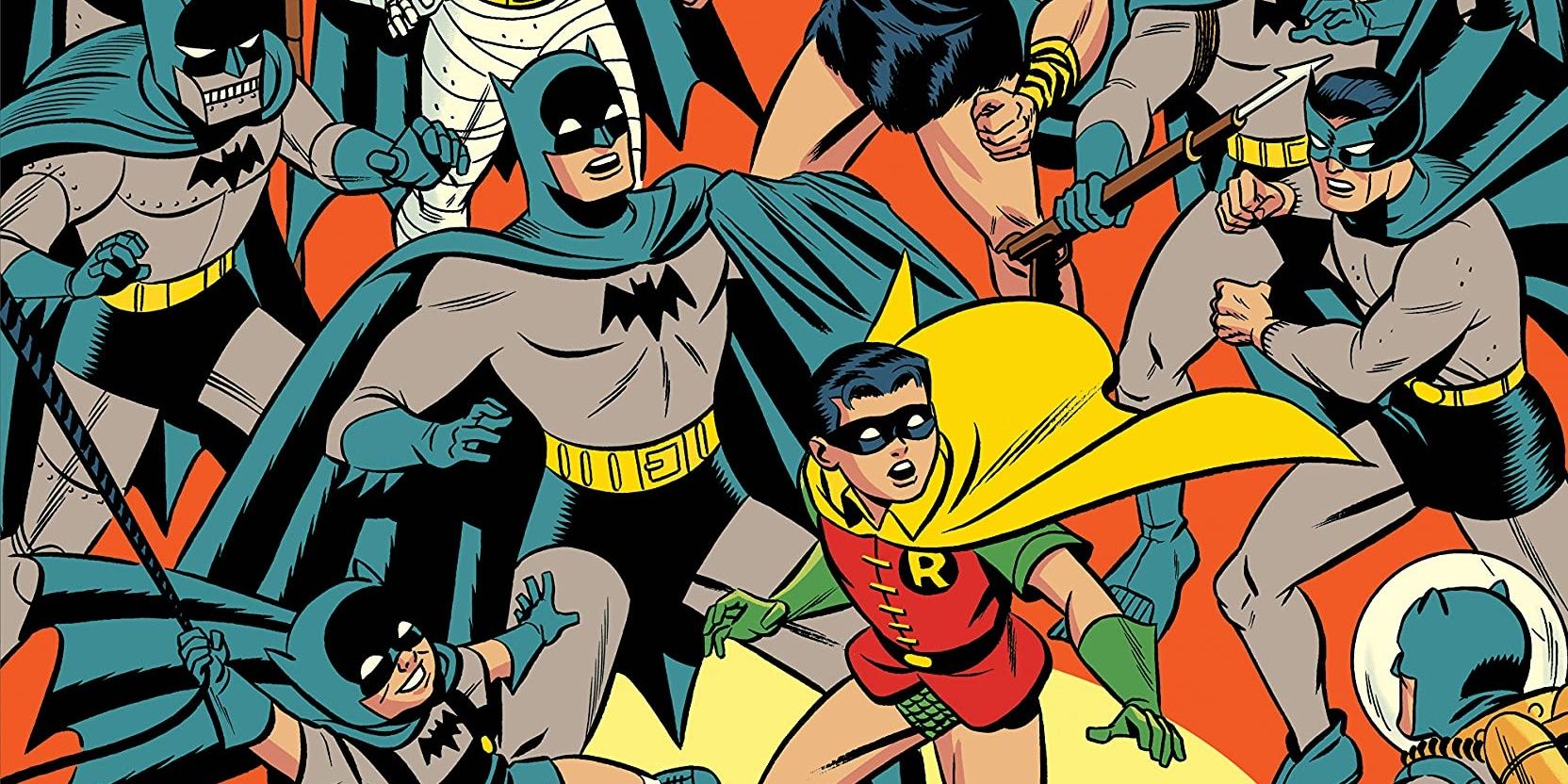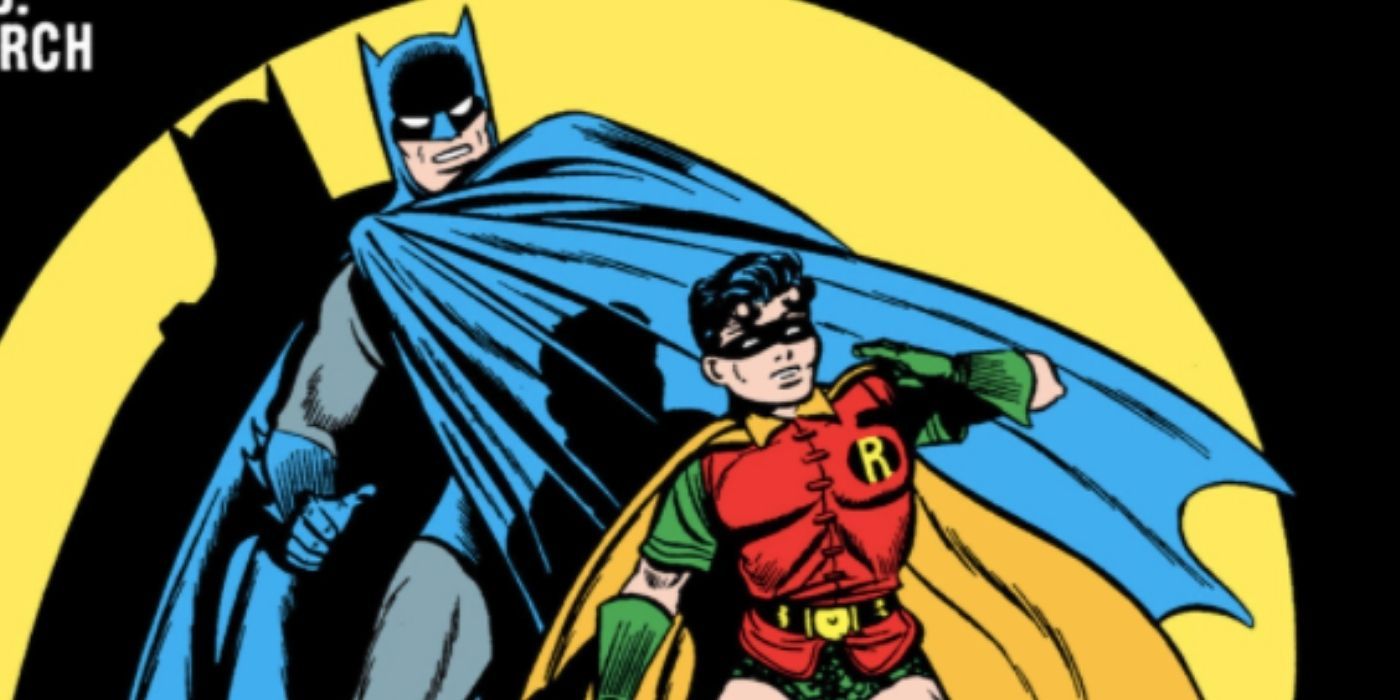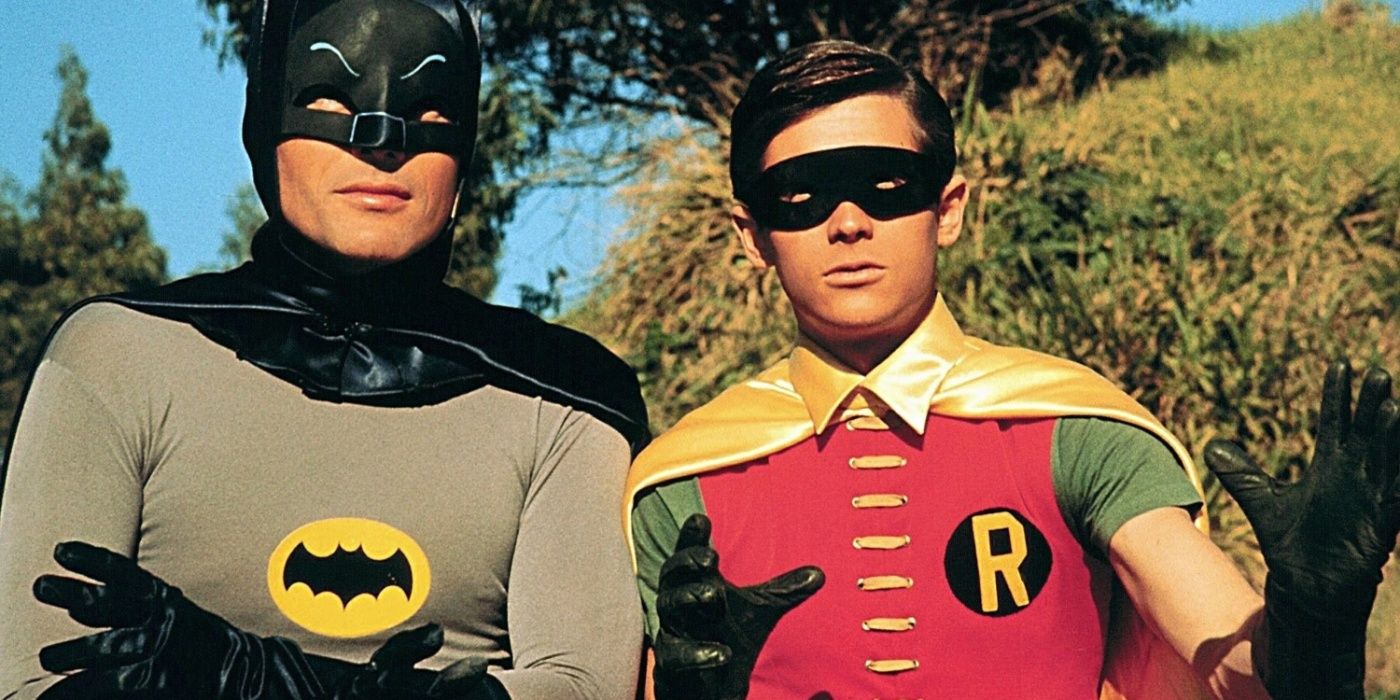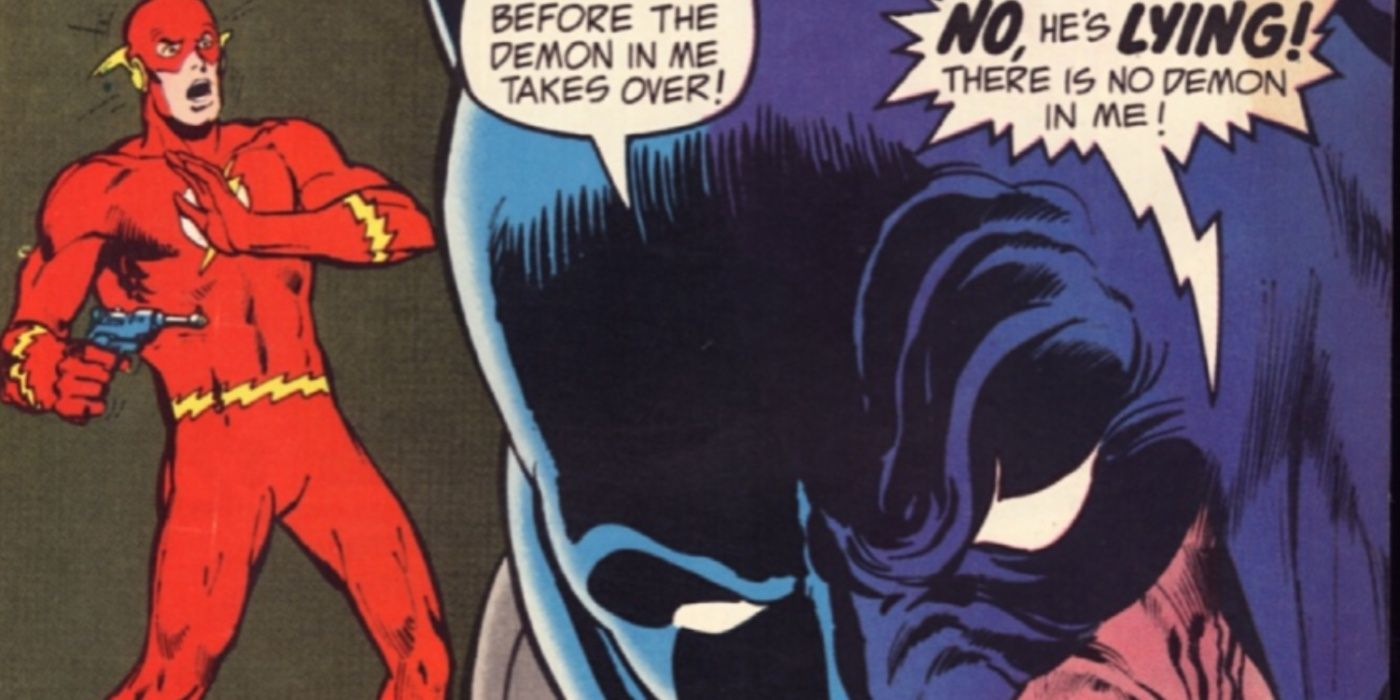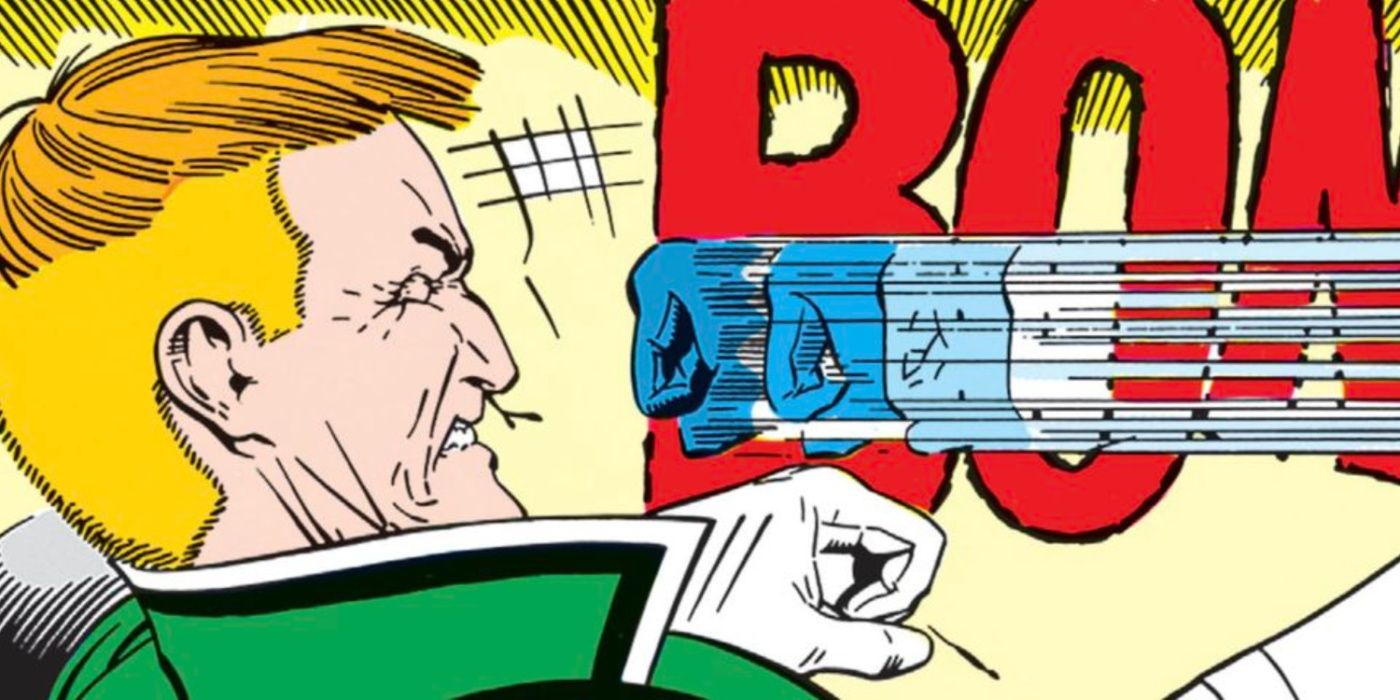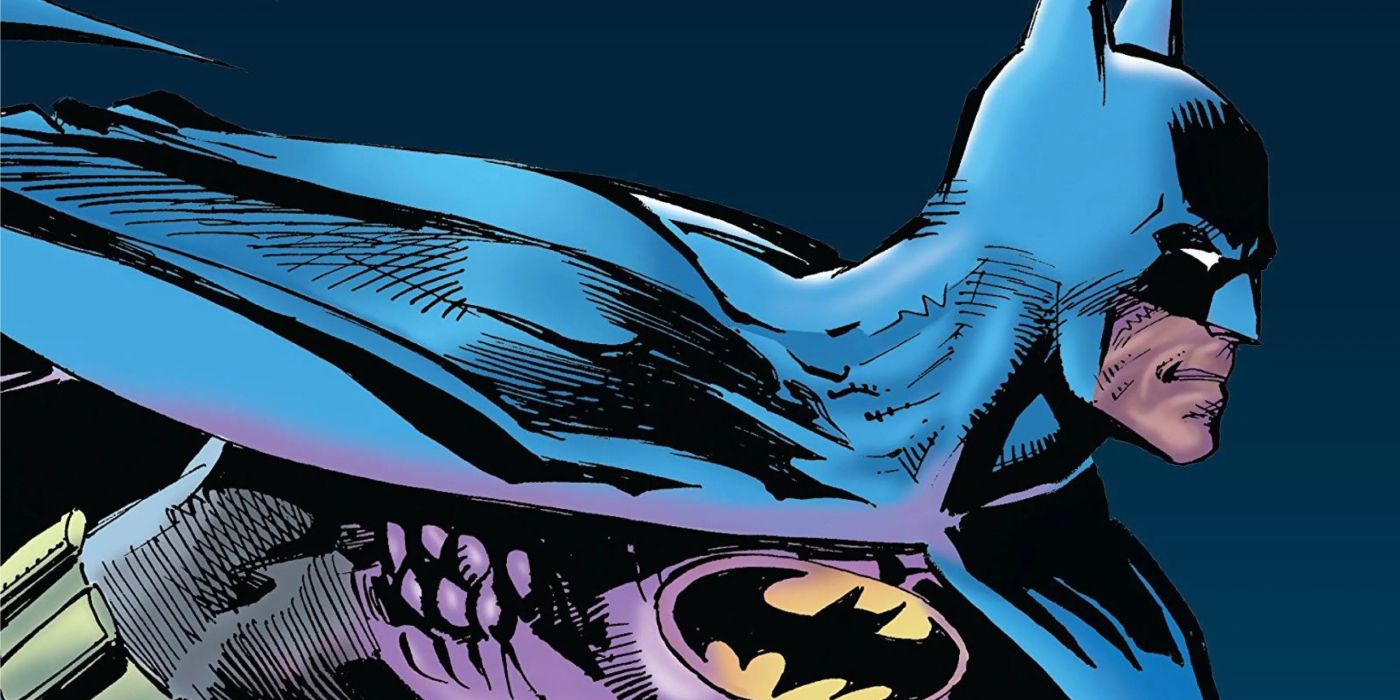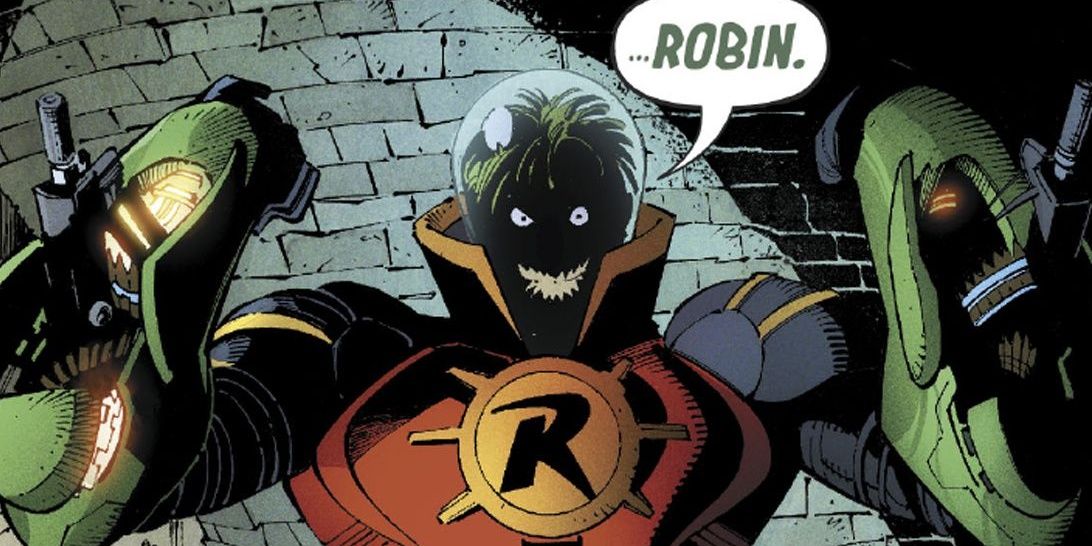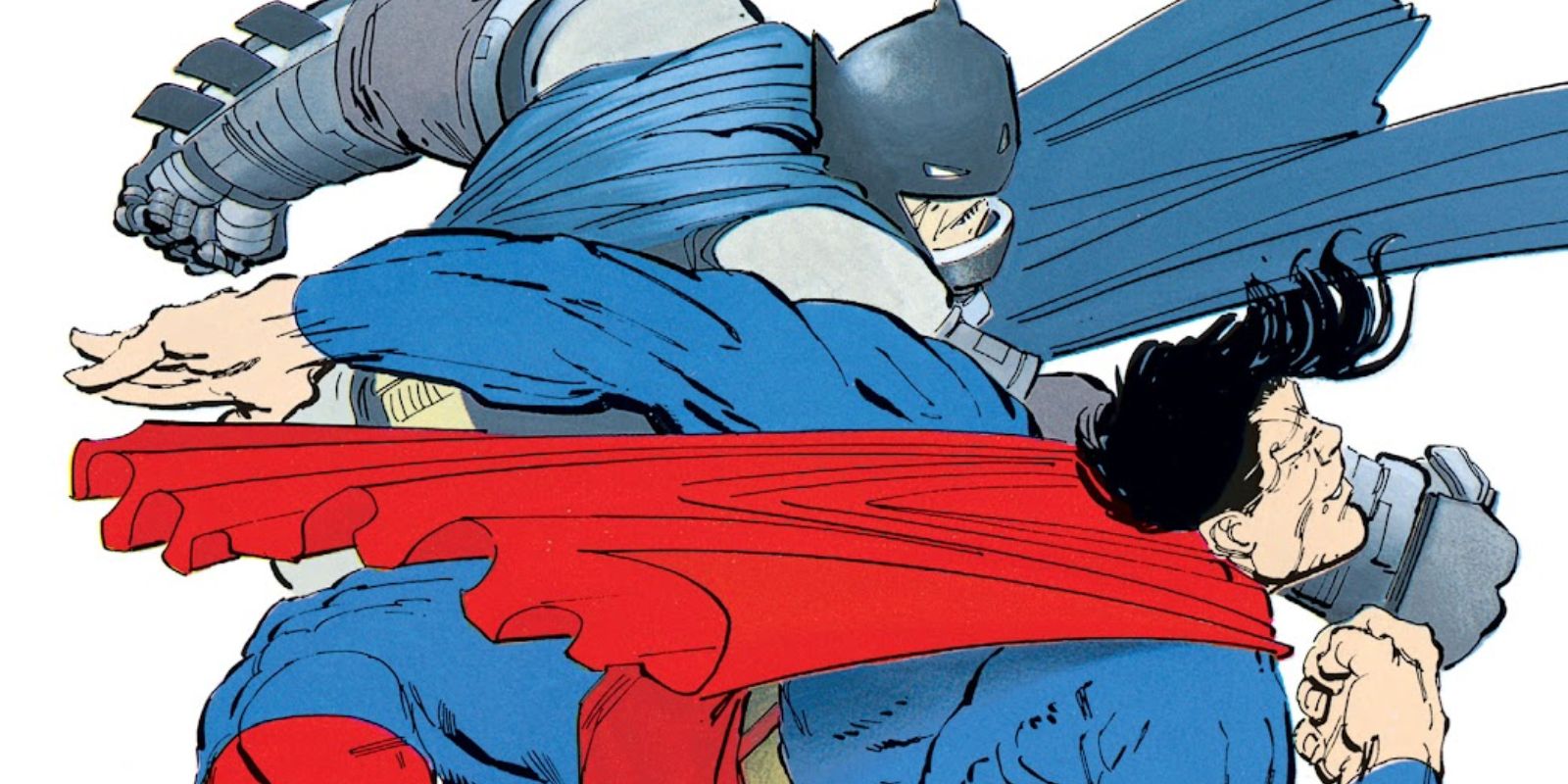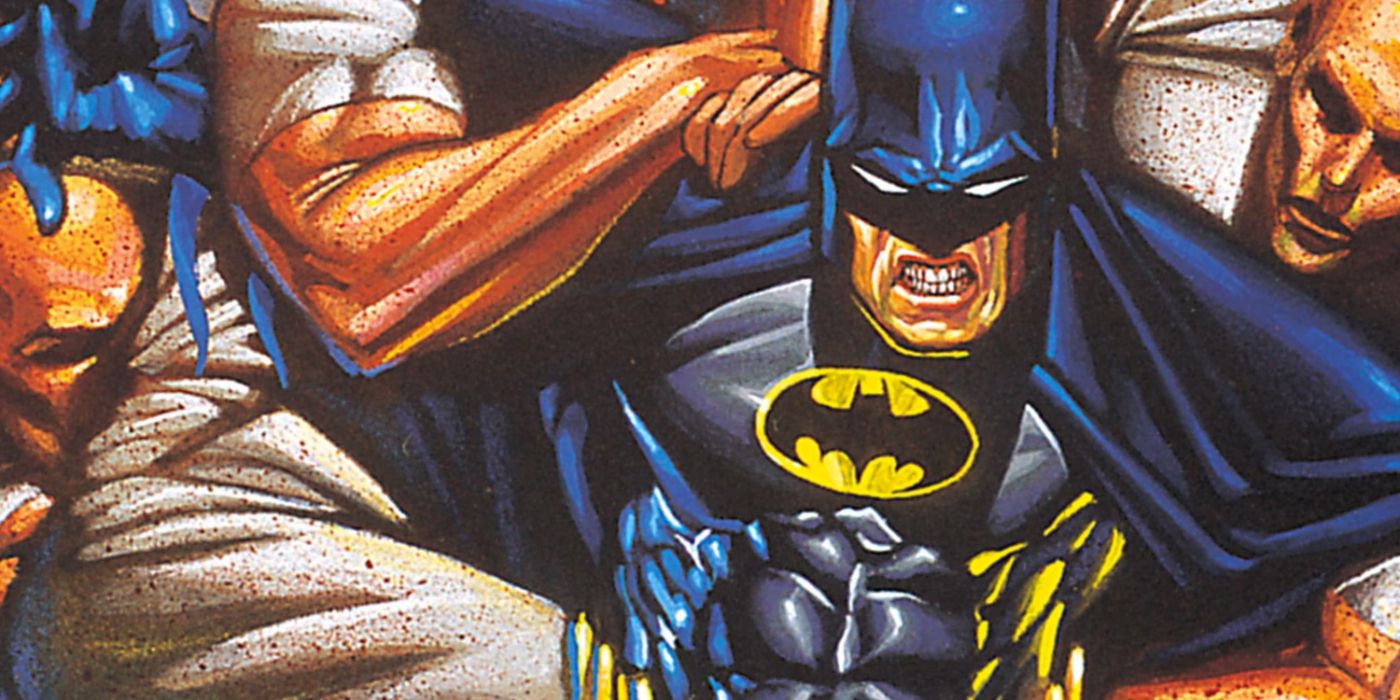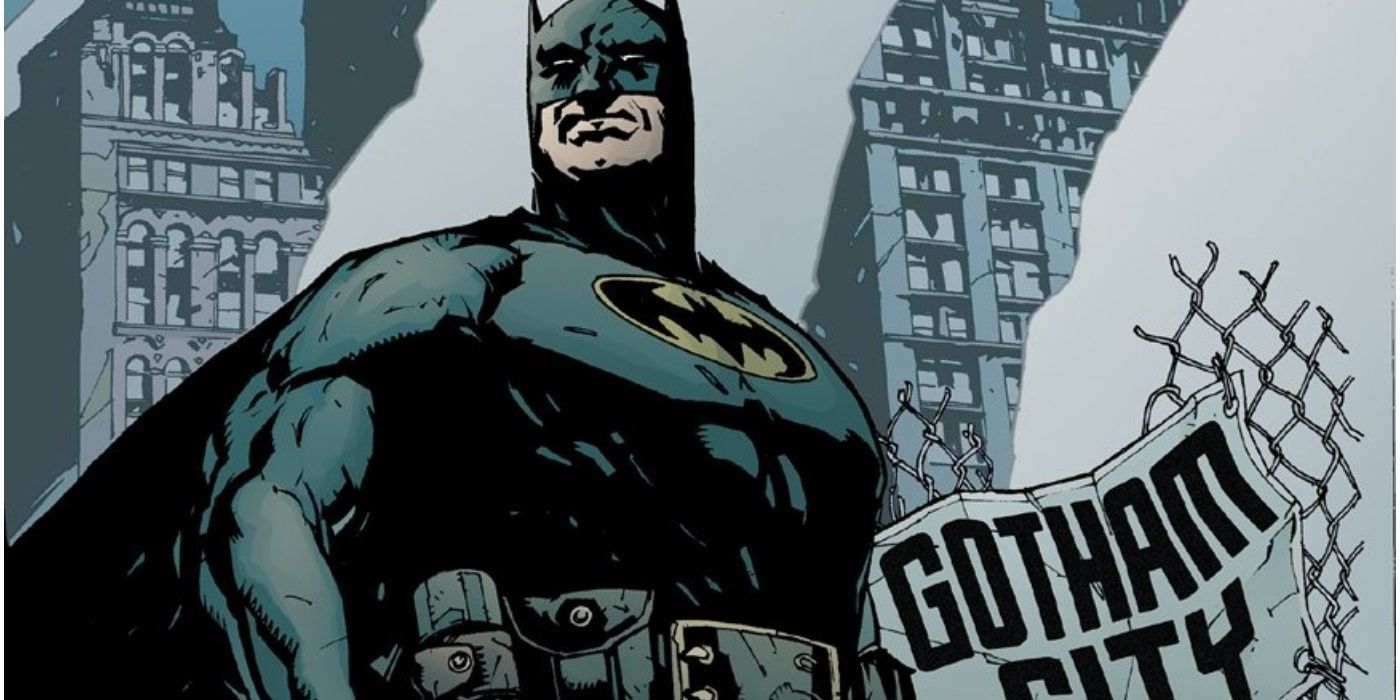It's no secret that DC Comics have made Batman the centerpiece of their publishing strategy, through both miniseries and ongoing titles. Having been created in 1939, Batman was one of the company's first heroes. Over time, his story got reimagined and reinvented through multiple eras of comics. Many of these takes on Batman are more than overdue for a revisit.
Batman has experienced some of the most drastic changes in comic book history, beginning as a dark vigilante, undergoing a campy makeover and becoming one of comics' darkest characters. There are many loose threads hanging in his history that could benefit from a miniseries that explore previous versions.
10 Batman In The Fifties
Though the 1960s are remembered as the age of comics when superheroes became campy, Batman was already well on his way to this in the '50s. Batman embarked on some of his most random adventures, from duels with ancient knights to meeting the original Batman of Zur-en-Arrh.
The 1950s felt like a bright, Saturday-morning cartoon take on Batman. The Dark Knight often found himself in the strangest of cases, with a young Dick Grayson at his side. A miniseries about '50s Batman would be the perfect opportunity to paint villains like Poison Ivy and Clayface in a nostalgic light. Similarly, Batman's strategies can mirror the campy days when a change of costume was a viable solution to his problems.
9 Golden Age Batman
Like many other DC comics of the time, Batman's Golden Age comics explored a darker take on his heroic mission. However, like many of his peers from this era, the Golden Age Batman got moved to a now defunct version of Earth-2.
The Golden Age Batman has made a return to the DCU in various stories, such as the recent Generations miniseries, which united several eras of DC heroes. This version of Batman also experienced a famously tragic demise. A miniseries that retcons this Batman's final days would give Gotham's hero some semblance of closure and would be a treat to DC fans.
8 Batman '66
The Adam West portrayal of Batman helped revive the Caped Crusader in pop culture, especially in comics where he went from a failing title to becoming a best-seller. DC Comics has honored this era by giving the Adam West version of Batman a slew of titles, including an ongoing series and some crossovers.
The very aspects of the campy Batman that didn't age well on TV actually fit well on the printed page, where practical costumes and special effects aren't an issue. Exploring more of Batman '66 through crossovers with other classic TV icons from the era would be an entertaining plot for a miniseries.
7 Batman: The Brave And The Bold
The original The Brave and the Bold series began as a simple team-up comic, but was quickly dominated by Batman following the success of Adam West's 1966 Batman TV show. The series became a Batman comic where the Caped Crusader joined forces with a different hero each month to take on the latest threat.
Although Batman: The Brave and the Bold is back in print, the series forgot everything that made the original title great. Instead, it abandoned condensed, done-in-one team-up stories for longer arcs. The Bronze Age version of Batman thrown into these classic adventures could revisit some of his open-ended adventures, in a shorter format that could be spun out into an ongoing.
6 Justice League International
Many readers enjoyed Justice League International thanks to the clash of personalities, comedy, and a slice of life tone. This era created many challengers for the team, including monstrous foes, Joker driving a tank to Big Barda's house, and a rivalry between Batman and Guy Gardner.
The Justice League International showcased a version of Batman who was still a stern leader for the team before he became the paranoid, scheming character post-Tower of Babel. His rivalry with Guy and how he balanced out the team's goofier moments is long overdue for a return.
5 Dennis O'Neil And Neal Adams' Batman
The Bronze Age era of Batman had a few creators behind the scenes, but it was really the creative pairing of Dennis O'Neil and Neal Adams that redefined the Dark Knight. The two crafted a version of Batman who felt more grounded, and they established him in a more Gothic, dark detective light than before.
Many Batman fans would love if DC Comics returned to this era, matching its original tone. Such a miniseries could lean into Batman's Bronze Age adventures, his rivalry with Ra's al Ghul, and the beginnings of his romance with Talia. A Gothic horror miniseries that borrows from O'Neil and Adams' stories would have all the makings of a modern classic.
4 Last Knight On Earth/New 52 Batman
One of the most treasured runs in Batman history was the collaboration between Scott Snyder and Greg Capullo, delivering stories like "The Court of Owls." Recently, the duo reunited to turn in their grand finale for their run in Last Knight On Earth, which followed Batman in the post-apocalypse.
Although both Scott Snyder and Greg Capullo have seemingly moved on from DC to work on their own projects, a new creative team could craft a miniseries that delves deeper into this era. Exploring the clone Batman's future would be a treat. It'd be even greater if the iconic creators themselves explored this future, delivering a deeper dive into the prospects for the surviving heroes.
3 Late '80s/Dark Knight Returns Batman
The late 1980s was a genuine revival period for Batman, thanks in large part to Frank Miller and Klaus Janson's Dark Knight Returns miniseries. This title explored a future, older Bruce Wayne coming out of retirement to save his city from the crime wave brought on by the Mutant gang.
Despite a divisive sequel, the reception for the overall Frank Miller Batman future remains positive. DKR III: The Master Race proved Miller's universe was till a great read. Given that so much history is left unexplored, DC should create a series that explores how a young MillerVerse Batman protected Gotham.
2 Alan Grant's Batman
Alan Grant's Batman, which was a defining version in the early 1990s, was almost perfectly timed for its era. Along with creators like Norm Breyfogle and John Wagner at his side, Grant penned a great era of Batman known for its darker themes, grounded action, and emphasis on using detective skills.
Alan Grant's version of Batman is closer to the version featured in Christopher Nolan's Dark Knight trilogy, but is combined with a Bronze Age style that evokes '90s grit. This led into his Shadow of the Bat series, which more than deserves a resurrection entailing dark thrillers.
1 No Man's Land
During the 1990s and 2000s some of Batman's greatest stories, including the seminal "Hush" arc., were told. The No Man's Land event became the height of this era, featuring Gotham in the wake of disaster. Villains ran amuck and started carving the city up for their own small fiefdoms.
It's surprising No Man's Land hasn't been revisited more often, considering how great its concept was and how much room was left open for exploration. A miniseries could give modern readers, who aren't as familiar with the event, a high-intensity action series with a post-apocalypse aesthetic that brings the original concept back to life.

